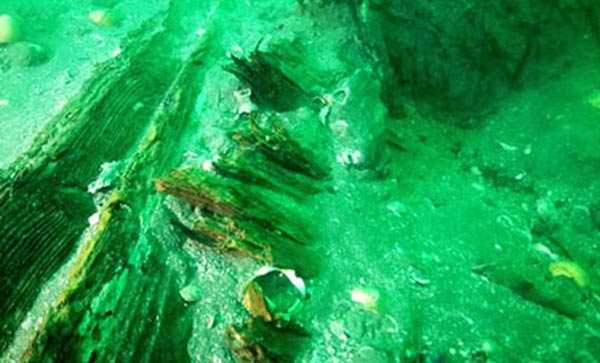Shipwreck found in Japan believed to be from 13th century Mongol invasion
During the 13th century, the Mongols, led by Kublai Khan, grandson of Genghis Khan, attempted two major invasions of Japan in 1274 and 1281 AD. However, on both occasions, a massive typhoon obliterated the Mongol fleet, forcing the attackers to abandon their plans and fortuitously saving Japan from foreign conquest. The Japanese believed the typhoons had been sent from the gods to protect them from their enemies and called them Kamikaze (‘divine wind’). Now archaeologists believe they have found one of the Mongol ships off Takashima island in Nagasaki Prefecture.
According to the Asahi Shimbun news, the ship was found using sonar equipment, lying 14 metres below the surface, about 1.7 kilometres away from another Mongolian warship that was discovered in 2011. The wreck is comprised of port and starboard structures near the bow of the ship, with preserved planks of wood that are around 11 metres long. Divers also found stone ballast, and archaeologists are hoping that the ship's keel lies underneath.
"We really hope it is a Mongol invasion ship," said Yoshifumi Ikeda, a professor of archaeology at the university who is leading the research effort. "We plan to clarify details like its structure, size and origin by excavating further. It's well preserved, so we expect it to carry a significant load of cargo like porcelains and weapons."

Planks from the wreck believed to be from a 13th-century Mongol invasion attempt at the Takashima Kozaki underwater historic site in Matsuura, Nagasaki Prefecture. Credit: University of the Ryukyus and the Matsuura city board of education
Following the conquest of China in 1230 and Korea in 1231, Kublai Khan become the first emperor of Mongolia and renamed it the Yuan Dynasty, meaning ‘first beginning’. Japan was just 100 miles away, and feared an invasion, and they had reason to. Between 1267 and 1274, Kublai Khan sent numerous messages to the Emperor of Japan demanding that he submit to the Mongols or face invasion. However, the messengers were blocked by Japan’s shogun, the real power behind the throne, and they never reached the Emperor. Kublai Khan became furious that he never received a reply from the Emperor, who he referred to as ‘ruler of a small country’, and he vowed to invade Japan. The Mongols set to work on building an enormous fleet of warships and recruited thousands of warriors from China and Korea.
In the Autumn of 1274, the Mongols launched their first invasion on Japan, which has become known as the Battle of Bun'ei. An estimated 500 to 900 vessels and 40,000 warriors, mostly ethnic Chinese and Koreans reached the shores of Hakata Bay where the two forces met. The Mongols devastated the Japanese forces who began to retreat. However, fearing the Japanese were getting ready to return with reinforcements, the Mongols retreated to their ships. That night, the typhoon struck as the ships lay at anchor in Hakata Bay. By daybreak, only a few ships remained. The rest were destroyed, taking the lives of thousands of Mongols with them.

The First Mongol Invasion of Japan. Image source.
While the Japanese had a lucky escape in 1274, it was not over yet. The Mongols were now more determined than ever to conquer Japan. They worked hard to rebuilt their fleet and recruit greater numbers of warriors. Seven years later, the Mongols returned with an enormous fleet of 4,400 ships and an estimated 70,000 to 140,000 soldiers. Unable to find any suitable landing beaches due to walls that the Japanese had constrcuted, the fleet stayed afloat for months and depleted their supplies as they searched for an area to land. On August 15, the Mongols prepared to launch their assault on the much smaller Japanese forces defending the island. However, once again, a massive typhoon hit, wrecking the Mongol fleet and once again foiling the invasion attempt.

The Second Mongol Invasion of Japan – the Mongols who survived the typhoon were slaughtered by Japanese samurai warriors at the water’s edge. Credit: Yado Issho
Contemporary Japanese accounts indicate that over 4,000 ships were destroyed and 80 percent of the soldiers either drowned or were killed by samurai on the beaches in what became one of the largest and most disastrous attempts at a naval invasion in history. The Mongols never attacked Japan again.
Featured image: The bow of a ship believed to be from a 13th-century Mongol invasion attempt at the Takashima Kozaki underwater historic site in Matsuura, Nagasaki Prefecture. Credit: University of the Ryukyus and the Matsuura city board of education.




















Comments
Interesting information! I love how the Shogun shielded the Emperor from the messages.
love, light and blessings
AB
That is a very significant find for Japanese history if that is a Mongol invasion ship. Awesome article!
Peace and Love,
Ricky.